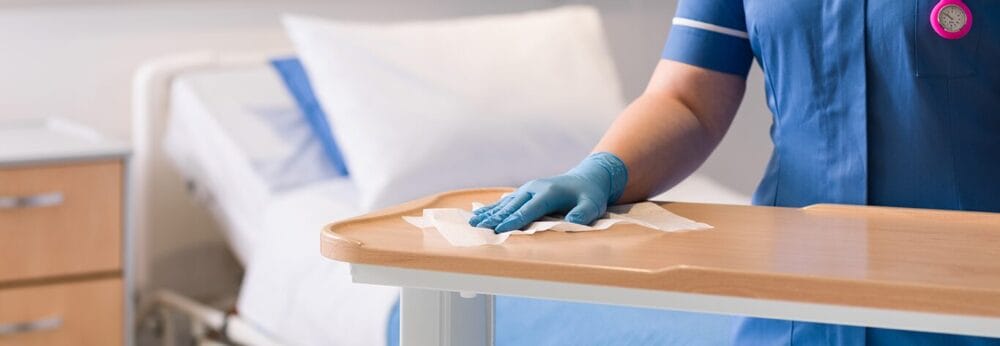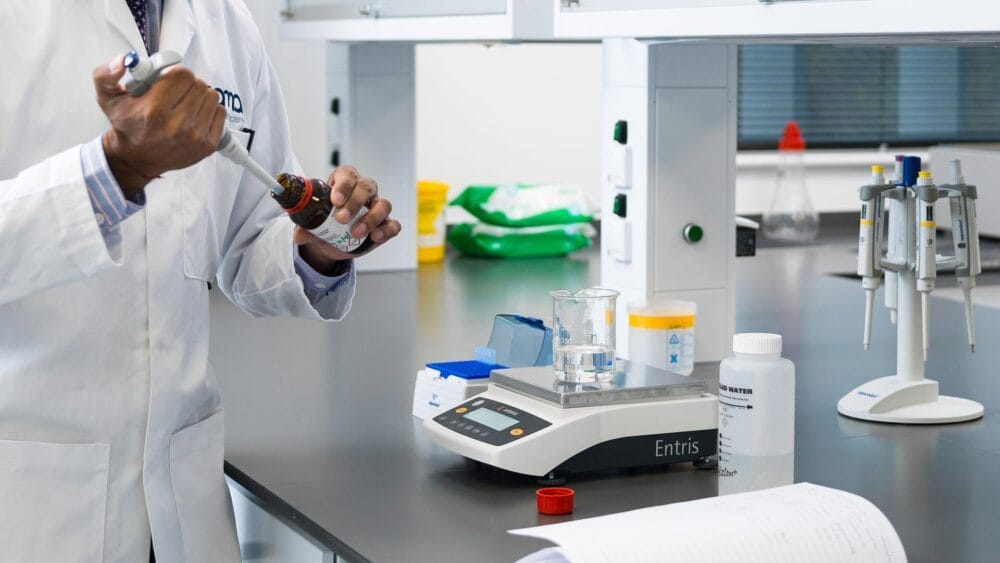Posted
5th April 2019
Research
A new review in the Journal of Infection Prevention by Dr Evonne Curran and colleagues sets out the arguments for and against the routine use of disinfectants in the healthcare environment.
The review dispels some of the common arguments used against the routine use of disinfectants in the healthcare environment, and presents a novel risk-based scheme for deciding when to use detergent only for cleaning surface in the healthcare environment (which is not very often!).
Historically, the use of detergent cleaning only without the use of a chemical disinfectant has been the favoured model for cleaning the healthcare environment in the UK (whilst other countries have historically taken a more disinfectant-centric approach).
However, we now know that detergent cleaning only does not reliably eliminate pathogenic micro-organisms from surfaces, and can inadvertently spread pathogens between surfaces. Therefore, routine use of disinfectants in the healthcare environment is becoming more common.

This review article examines the common arguments against the routine use of disinfectants in the healthcare environment:
- “Recolonisation happens too quickly”. Whilst recontamination of surfaces in the environment can happen quickly, the use of disinfectants should be targeted to the surfaces and scenarios where surface contamination is involved in transmission, for example, at the time of discharge, and when patients are not (yet) known to be colonised or infected with a pathogen.
- “Disinfectants damage the environment”. We know that some chemical disinfectants damage the environment (e.g. chlorine) but the risk profile of other disinfectants are considerably better (especially the peroxygens such as peracetic acid and hydrogen peroxide, which break down into environmentally-friendly by-products). The risk of environmental impact from disinfectants is mitigate by appropriate use and disposal, and detergents are not without their own environmental impact!
- “Disinfectants present an occupational hazard.” This is true, again, for some disinfectants more than for others; this is especially a concern for chlorine-based disinfectants. However, the risk of occupational exposure can be managed out through the appropriate use of personal protective equipment.
- “Disinfectants themselves can become contaminated and present an outbreak risk.” This is a risk for certain application modes of certain disinfectants. However, it is much more of a risk for detergents, which don’t kill microbes! Also, the use of disinfectant wipes eliminates this risk.
- “Disinfectants are costlier than detergents”. Taking account of all factors, including the impact of reduced HCAI, and investment in disinfectants is likely to be cost neutral or even cost saving. Whilst the true cost of HCAI can be difficult to measure, it only takes a small number of HCAI events to tip the financial scales towards using disinfectants.
- “Micro-organisms could develop tolerance and resistance such that disinfectant-resistant organisms emerge”. If disinfectants are used at their in-use concentrations, clinically meaningful disinfectant resistance is unlikely to emerge. Indeed, common disinfection chemistries (such as quaternary ammonium compounds, peroxygens, and chlorine) have been in global use for many years and resistance to these chemical disinfectants has not emerged.
The article also makes a case that the traditional approach to risk assessment for when to use a disinfectant and when to use a detergent needs to be re-evaluated in light of modern healthcare, restricting the use of detergent-only cleaning to settings outside of the patient zone when no medical equipment is around.
In summary, the use of disinfectants for cleaning and disinfecting the healthcare environment is evidence based, maximises patient safety, and is likely to be at least cost-neutral if not cost-saving.
SHARE THIS ARTICLE
Tags
Latest News
Introducing HEXI HUB: A seamless transition in our product line
We’re pleased to announce an update to our product offering…
Innovative solutions for tackling Carbapenemase-producing Enterobacteriaceae (CPE) at King’s College Hospitals
King’s College Hospital NHS Foundation Trust, one of London’s largest…
Gloves Off: reducing unnecessary plastic waste during environmental cleaning and disinfection
In this blog, Dr Phil Norville discusses the momentum-gaining ‘Gloves…
Gloves Off: Navigating SDS sheets and skin safety claims in environmental decontamination products
In this blog, James Clarke (Head of R&D, Science &…




